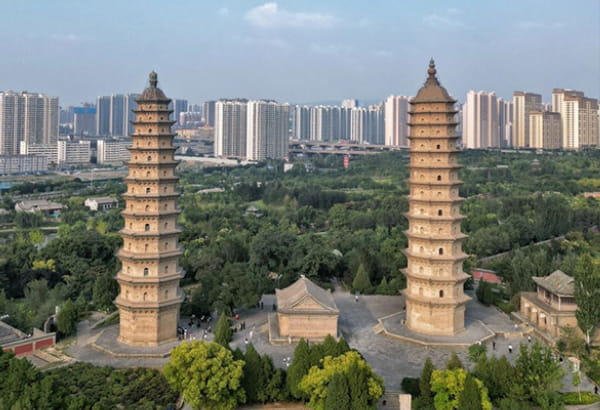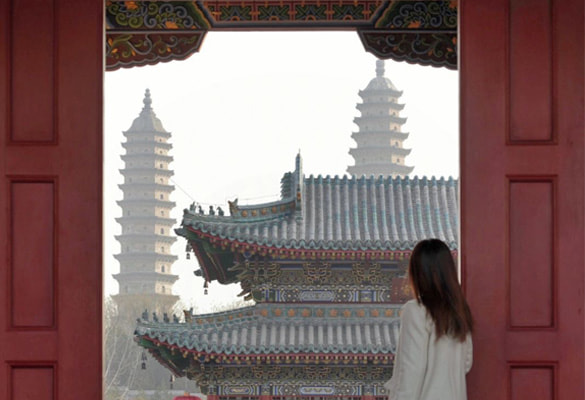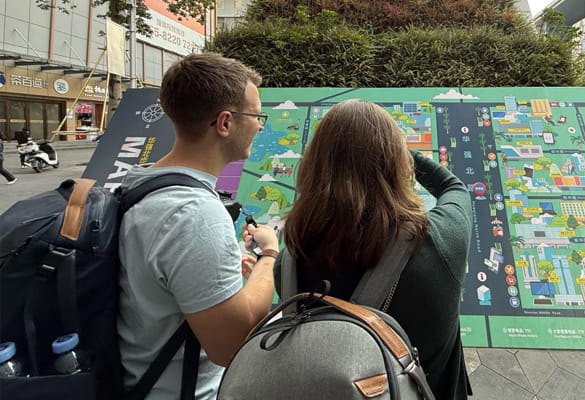China, a nation with a rich and enduring history and a resplendent culture, stands as a glittering gem in the eastern part of the world. From the ancient Huaxia civilization to modern prosperity, China’s historical legacy has nurtured countless achievements, drawing people from across the globe to explore and appreciate its unique charm. Today, let us step into China together, peel back the layers of this millennia-old civilization, and embrace its profound wisdom.

China has a history of over 5,000 years, 56 ethnic groups, a population of over 1.4 billion, a land area of 9.6 million square kilometers, and 34 provincial-level administrative regions (including 23 provinces, 5 autonomous regions, 4 municipalities directly under the central government, and 2 special administrative regions).
I. The Long and Ancient Historical Legacy
China’s history spans thousands of years, making it one of the four great ancient civilizations. As early as the 21st century BC, China established its first dynasty—the Xia Dynasty—marking the beginning of the Huaxia civilization. This was followed by numerous dynasties, such as the Shang, Zhou, Qin, and Han, each contributing to the development of Chinese civilization.
1. Dynastic Changes and System Innovations
Throughout its long history, China experienced several dynastic changes, each accompanied by transformations and innovations in social systems. For instance, after the Qin Dynasty unified the six warring states, it established the commandery-county system, strengthening central power and laying the political groundwork for China’s feudal society. During the Tang Dynasty, the imperial examination system was introduced, offering fair competition for individuals from all social strata and selecting a wealth of talented individuals, which spurred social progress. The cabinet system of the Ming Dynasty and the Grand Council of the Qing Dynasty also helped centralize power, contributing to the nation’s unity and stability.
2. The Impact of Major Historical Events
Several key events in Chinese history had a profound influence on the development of Chinese civilization. Emperor Qin Shi Huang’s unification of writing, weights, and measures helped facilitate cultural exchange and integration, solidifying the cohesion of the Chinese nation. During Emperor Wu of Han’s reign, Zhang Qian’s mission to the Western Regions opened the Silk Road, fostering economic and cultural exchanges between China and the West, and spreading Chinese influence far beyond its borders. The prosperous Tang Dynasty, particularly during the Zhenguan and Kaiyuan periods, made China the most powerful nation of its time, attracting foreign envoys, scholars, and merchants to learn from and engage with its flourishing culture.
II. The Profound and Rich Cultural Heritage
Chinese culture is deep and expansive, encompassing literature, art, philosophy, religion, and science—each an embodiment of the nation’s wisdom.

Confucius Institutes located all over the world
1. The Treasures of Literature and Art
China’s achievements in literature and art are remarkable, contributing countless treasures to the global cultural heritage. In poetry, from the simplicity of the Book of Songs to the romanticism of the Songs of Chu, from the grandeur of Tang poetry to the elegance of Song lyrics, and from the accessibility of Yuan operas to the richness of Ming and Qing novels, each era of Chinese literature has its own unique style. For example, the Tang poets Li Bai and Du Fu—whose works Bring in the Wine and Spring View have been passed down for centuries—demonstrate both heroic aspirations and delicate emotions.
Chinese painting is known for its distinctive brush and ink techniques and profound artistic conception. From Gu Kaizhi’s Admonitions Scroll of the Eastern Jin Dynasty to Zhang Zeduan’s Along the River During the Qingming Festival of the Song Dynasty, each masterpiece not only showcases Chinese artists’ superb skills but also reflects the philosophical thoughts embedded in traditional Chinese culture.
2. The Wisdom of Philosophical Thought
Chinese philosophy is both ancient and profound, shaping the development of Chinese civilization. Confucianism, founded by Confucius, promotes moral values such as benevolence, righteousness, propriety, wisdom, and faithfulness, and advocates the life principle of “cultivating oneself, regulating the family, governing the country, and bringing peace to the world.” This philosophy profoundly impacted China’s politics, ethics, and education. Taoism, with Laozi and Zhuangzi as its primary figures, emphasizes living in harmony with nature and advocating non-action, promoting inner peace and detachment—ideas that also influenced China’s literature, art, and medicine. Mohism, led by Mozi, advocated universal love, non-aggression, and frugality, reflecting the interests of small producers. Legalism, represented by Han Feizi, stressed strict laws and centralized power, playing a crucial role in the unification of China under the Qin Dynasty.
3. The Glorious Achievements in Science and Technology
Ancient China’s inventions have left an indelible mark on global civilization. The Four Great Inventions—papermaking, printing, gunpowder, and the compass—have had a profound impact on the world. Papermaking revolutionized writing, making materials more affordable and promoting cultural spread. Printing enhanced the speed and quality of book production, accelerating the dissemination of knowledge. Gunpowder transformed warfare, while the compass provided a vital navigation tool, enabling the development of global maritime trade.
III. The Rich and Diverse Folk Customs
China is a multi-ethnic country, and each ethnic group has its own unique folk customs. These customs are an integral part of Chinese culture, showcasing the diversity and creativity of the Chinese nation.
1. The Festive Spirit of Traditional Festivals
China’s traditional festivals are rich in meaning and diverse in customs. The Spring Festival is the most important holiday, where homes are adorned with lanterns and couplets, firecrackers light up the sky, and families gather for reunion dinners. This holiday marks the transition from the old year to the new and celebrates family unity and harmony. The Mid-Autumn Festival is a time for moon appreciation, mooncakes, and expressing longing for loved ones. The Dragon Boat Festival commemorates the patriotic poet Qu Yuan with dragon boat races and the eating of zongzi (rice dumplings), symbolizing national unity and patriotism. The Qingming Festival is a time for ancestor worship and tomb sweeping, with families paying respects to their ancestors while enjoying the natural beauty of the season.

Traditional competitive activity: Loong Boat Race
2. The Unique Craftsmanship of Folk Arts
Chinese folk arts are diverse and finely crafted, with strong regional and ethnic characteristics. Paper-cutting is renowned for its intricate patterns and distinctive techniques, such as the bold style of Shaanxi paper-cutting and the delicate precision of Jiangsu designs. Shadow puppetry, a traditional folk performance, brings stories to life through projected shadows. Regional dances, like the Yangko in the Northeast and the Lusheng in the Southwest, showcase the customs and traditions of China’s various ethnic groups. Traditional handicrafts such as ceramics, embroidery, lacquerware, and bamboo weaving are not only functional but also possess great artistic value.

Exquisite Paper Cuttings art
IV. The Magnificent and Beautiful Natural Scenery
China’s vast landscape offers an array of stunning natural wonders, from majestic mountains and rivers to picturesque lakes and grasslands, captivating countless visitors.
1. Majestic Mountains and Rivers
China’s famous mountains and rivers are world-renowned for their beauty and significance. Mount Tai, known as the “leader of the Five Great Mountains,” has inspired poets and scholars for centuries. The Yangtze River, China’s longest, winds through 11 provinces, offering breathtaking views along its course, from the steep Three Gorges to the serene Dongting Lake and tranquil Poyang Lake. The Yellow River, known as the “Mother River” of China, has nourished Chinese civilization for millennia, with the Hukou Waterfall and its twists and turns showcasing the river’s power and beauty.

The magnificent Mount Taishan Mountain
2. Picturesque Lakes and Grasslands
China’s lakes and grasslands are equally beautiful. Qinghai Lake, the largest saltwater lake in China, is surrounded by mountains and grasslands, offering a stunning backdrop for watching the sunrise and sunset. The Hulun Buir Grassland, vast and boundless, embodies the spirit of Mongolia, with galloping horses and herds of cattle and sheep. West Lake, famous for its picturesque scenery, combines lakeside beauty with cultural landmarks, making it a favorite for visitors.

Beautiful scenery of Xinjiang
3. Mysterious Canyons and Caves
China’s canyons and caves are filled with wonder and adventure. The Three Gorges of the Yangtze River offer dramatic landscapes and rich cultural history. Huanglong Cave, one of China’s largest, is home to spectacular stalactites, stalagmites, and stone formations that create an otherworldly atmosphere. Zhangjiajie Grand Canyon, known for its unique rock formations and thrilling glass bridge, attracts countless adventurers and sightseers.

Zhangjiajie Grand Canyon Scenic Area
V. The Prosperous Development of Modern China
Building on its rich cultural heritage, modern China stands tall in the east, thriving in a range of fields such as economics, science, technology, and culture.

Shanghai, the largest city in China
1. Economic Growth and Advancement
Since the reform and opening-up period, China’s economy has soared to become the world’s second-largest. China boasts a complete industrial system and a vast market. The country’s infrastructure is rapidly developing, with high-speed rail, modern highways, and impressive bridges like the Hong Kong-Zhuhai-Macao Bridge, a testament to China’s technological innovation. Emerging industries such as e-commerce and mobile payments are booming, with companies like Alibaba and Tencent having global influence.
2. Scientific and Technological Innovation
China has made impressive strides in science and technology. The country’s space program has achieved groundbreaking successes, from the Shenzhou spacecraft to the Chang’e lunar missions and Tianwen-1 Mars probe. China is also leading the world in 5G communications, with companies like Huawei at the forefront of global development. China’s high-speed rail network is the largest in the world, offering fast and efficient transportation.

China’s high-speed rail network has reached a total length of 48,000 kilometers (2024 data), ranking first in the world, and it spans across the entire country.
3. Cultural Innovation and Preservation
Traditional Chinese culture continues to evolve in the modern era. In addition to preserving ancient traditions such as Chinese opera, calligraphy, and acupuncture, China has introduced new forms of popular culture, including the global success of Chinese films and TV shows, the rise of Chinese fashion, and the popularity of Chinese cuisine worldwide.
Delicious Beijing roast duck
China, with its long history, rich culture, and rapid development, is an awe-inspiring and diverse country. From its historical monuments to modern technological achievements, from its folk customs to its natural beauty, China invites the world to appreciate its wealth of wonders. Through exploration and understanding, we can better appreciate this glittering gem of the East and contribute to a deeper, more enduring connection with this great nation.







